Why is YouTube on Chrome (and Firefox) consuming Laptop batteries?
All modern devices support hardware H.264 hardware-accelerated hardware. Includes all smartphones, tablets, PCs, Macs, and even Chromebooks. When a web browser, even Chrome - plays H.264 videos on YouTube, it will transfer to the GPU. Even Adobe Flash supports hardware acceleration H.264 video.

1. HTML5, H.264 and VP9
Currently YouTube dumps most Flash videos to playback HTML5 video plug-ins.
However, the HTML5 video player is not standardized. The browser can select the video codec that the user wants to use, and there is no single decoder for all browsers.
When YouTube uses Flash, it uses H.264 codec for video playback. Videos using this codec usually have an extension of .mp4 file, and are often referred to as MP4 video.
All Safari, Internet Explorer, Microsoft Edge, Chrome and Firefox browsers support playback of H.264-encoded video.
While Apple and Microsoft only support H.264 video playback on their browsers, Google has also developed its own codecs. Google acquired VP8 codecs and integrated it into Chrome and Firefox browsers.
Google is also pushing the next generation of VP9 codecs, which are also now integrated into Chrome and Firefox. Files using this codec usually have an .webm extension, and often it's called a WebM file.
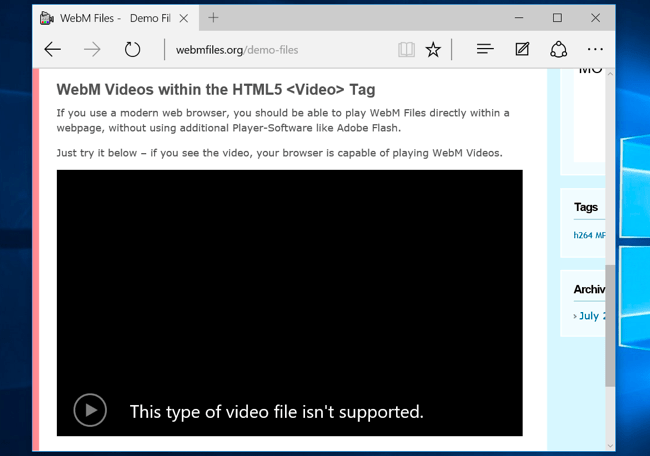
2. Why does Google create VP8 and VP9?
While H.264 is a de facto industry, it does have some important issues. The underlying technology is covered by a series of patents. To use these technologies - if you have integrated technology into the product, such as you need to pay a fee for the H.264 patent portfolio.
That's why Mozilla has introduced H.264 for a long time. They want their website based on open standards (open standard) does not require any fees. Google releases VP8 and VP9 to allow users to do whatever they want, without collecting patents.
Cisco is paying licensing fees and provides free plug-ins for Firefox users. Firefox will automatically download this plug-in and use it to enable H.264 support.
3. VP8 is still not popular
It is worth mentioning that Google did not succeed with VP8. In early 2011, Google announced that it would remove H.264 support on Chrome to support the opening of codecs like Vp8 and Theora. However, until now Google has not done this.
Mozilla has added support for H.264. Currently H.264 is the de facto codec standard (actual standard).
It is also the only option for mobile browsers. Many websites have added HTML5 video only with H.264 support and Chrome and Firefox browsers will have to shut down if they do not support H.264.
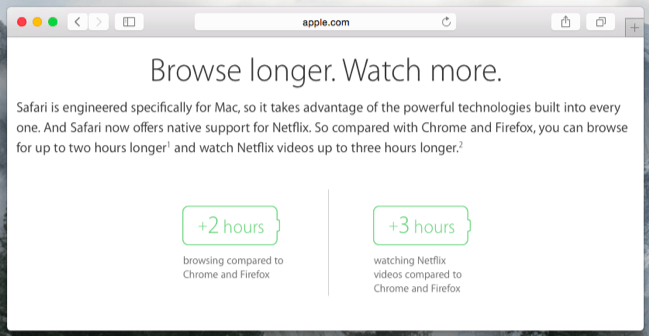
4. Core problem: Hardware Acceleration
The core issue here when playing H.264 is hardware-accelerated. This means that when playing an H.264 video file with a graphics processor (GPU) is much more efficient.
If hardware decoding is not available, the CPU will have to do everything, so it will be less efficient. This means that if hardware decoding is available, video playback takes less CPU time, or it can be understood that it consumes less battery power and less heat is generated.
All modern devices support hardware H.264 hardware-accelerated hardware. Includes all smartphones, tablets, PCs, Macs, and even Chromebooks. When a web browser, even Chrome - plays H.264 video, it goes to the GPU. Even Adobe Flash supports hardware acceleration H.264 video.
However, there is no hardware to speed up VP8 and VP9 videos.
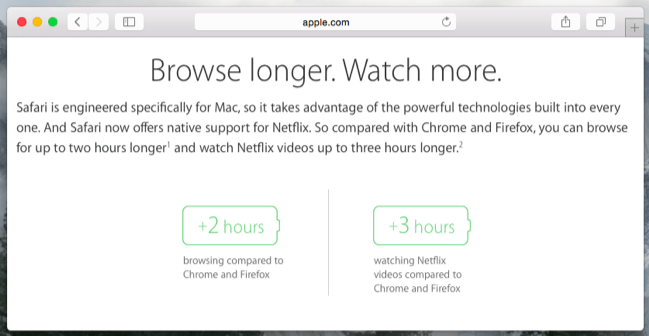
5. How to play YouTube videos more effectively?
Like the chicken and egg story, manufacturers will not be able to implement hardware-accelerated VP9.
Google solved this problem by adding VP8 and VP9 to Chrome and notifying YouTube to support VP9 and VP8 videos on the Chrome browser. In addition YouTube can also support videoVP8 and VP9 on Firefox browsers.
This can help users save download time, but it also means YouTube will consume a lot of battery power and CPU cycles in the Chrome browser. On devices with slow CPUs, video playback may be interrupted.
For more efficient video playback, you can switch to using Safari, Microsoft, Edge or Internet Explorer. However, you can install the extension h264ify on the Chrome browser, which will force Chrome to request H.264 video playback on YouTube.
Download the h264ify extension for the Chrome browser, download the h264ify extension for Firefox.
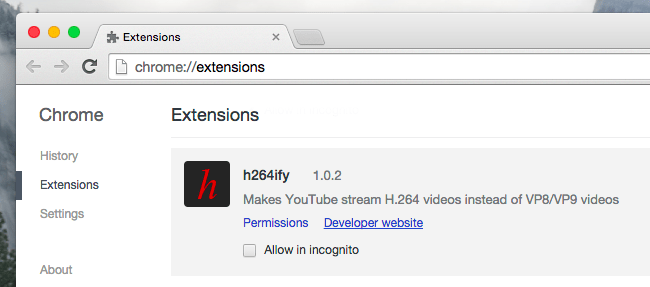
6. How to check if YouTube uses H.264, VP8, or VP9?
To check the YouTube codec used on your browser, right-click the YouTube video during the video playback process, select 'Stats for needs'. To the right of the 'Mime Type' section you will see "video / mp4" and "avc" video codec H.264 / Mp4.
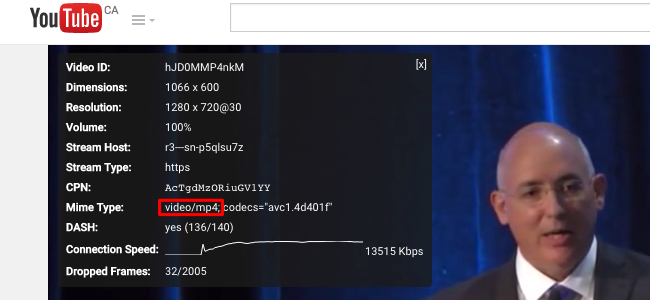
With VP8 and VP9 videos, you'll see 'video / webm' and either 'vp9' or 'vp8'.

Refer to some of the following articles:
- How to watch blocked YouTube videos or restrict viewers without signing in or proxying
- 7 YouTube URLs help you become a true "hacker" YouTube video
- Speed of downloading YouTube videos is as slow as slugs, this is a fix
Good luck!
You should read it
- Instructions for deleting a video on YouTube
- Things to remember when SEO YouTube videos
- How to prevent YouTube from suspending?
- How to delete YouTube history and ensure privacy
- Guide 3 ways to block ads on YouTube videos
- 7 things you can do to 'save' YouTube
- Save Internet bandwidth and battery when playing YouTube videos
- 2 ways to replay, replay YouTube videos automatically
May be interested
- 9 tips to increase YouTube video rankings on Google
 youtube constantly updates their search algorithm to provide users with a better experience. when the platform first came out, the total number of view views of the video was used to determine the video rankings (for example, the higher the number of views, the higher the ranking).
youtube constantly updates their search algorithm to provide users with a better experience. when the platform first came out, the total number of view views of the video was used to determine the video rankings (for example, the higher the number of views, the higher the ranking). - Trick to insert Autoplay code for YouTube videos
 you can easily embed your video automatically every time someone visits the page by simply adding a parameter to the youtube url. this trick is extremely useful in case if your website is a sales site. every time a user accesses, the video is spontaneous so that users can view the review of any product.
you can easily embed your video automatically every time someone visits the page by simply adding a parameter to the youtube url. this trick is extremely useful in case if your website is a sales site. every time a user accesses, the video is spontaneous so that users can view the review of any product. - Here's how to change your YouTube channel name and URL
 if you want to change your youtube channel name with a memorable and impressive name, attract users to subscribes, like and comment on your youtube channel. refer to the steps to change your youtube channel name and url in the following article of network administrator.
if you want to change your youtube channel name with a memorable and impressive name, attract users to subscribes, like and comment on your youtube channel. refer to the steps to change your youtube channel name and url in the following article of network administrator. - How to download YouTube videos to Android phones
 youtube is currently the largest video social network, meeting all users' video search needs. we can find all videos and download youtube videos to phones and computers quickly.
youtube is currently the largest video social network, meeting all users' video search needs. we can find all videos and download youtube videos to phones and computers quickly. - How to share data between devices without installing software
 with 5 applications that support online content sharing over the wireless network, users can copy and paste any content without having to go to any other software or application.
with 5 applications that support online content sharing over the wireless network, users can copy and paste any content without having to go to any other software or application. - Instructions for changing Dropbox password
 in the 2012 attack, hackers gathered information of 68 million accounts of the dropbox online cloud storage platform. dropbox confirmed this attack and forced customers to change their password.
in the 2012 attack, hackers gathered information of 68 million accounts of the dropbox online cloud storage platform. dropbox confirmed this attack and forced customers to change their password.






 Displays the amount of memory used by each tab on Firefox browser
Displays the amount of memory used by each tab on Firefox browser Tips to reduce laptop battery life and CPU usage when using Chrome
Tips to reduce laptop battery life and CPU usage when using Chrome Goodbye Chrome, we switch to Firefox
Goodbye Chrome, we switch to Firefox 7 Ways to Fix IDM Not Capturing Youtube Links on Chrome, Firefox?
7 Ways to Fix IDM Not Capturing Youtube Links on Chrome, Firefox? How to install the Chrome utility for Firefox
How to install the Chrome utility for Firefox